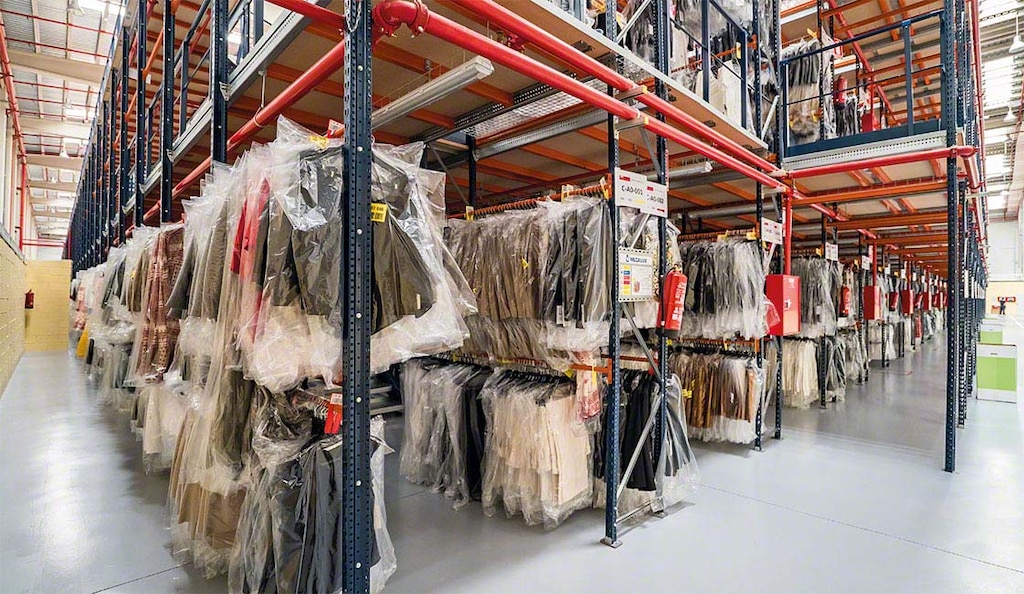
Dead stock and how to avoid it
Dead stock doesn’t just take up space in the warehouse — it also ties up capital and represents missed business opportunities. For companies, it serves as a reminder of the importance of efficient inventory management.
What is dead stock?
Dead stock, also known as obsolete or unsellable inventory, refers to warehoused goods that can no longer be sold or repurposed.
These items lose their economic value or usefulness for various reasons: changing customer preferences and market demand, new technologies replacing outdated products, lack of promotion, or unforeseen events (e.g., extreme weather conditions) that slow down sales.
Dead inventory can also result from supply chain management errors. These include poor demand planning (overproduction or overbuying based on inflated expectations) and inaccurate stock control, often due to the lack of a suitable logistics software solution.
Dead stock examples
These are some examples of merchandise prone to gathering dust on warehouse shelves:
- Seasonal products. The fashion industry is constantly in flux, with collections and garments that vary by season and year. Winter clothing in the middle of summer and post-seasonal holiday decorations can quickly become dead stock.
- Obsolete inventory. Electronic items like smartphones and computers may become outdated when new-and-improved models are released.
- Defective or damaged items. Products that can’t be sold due to quality issues or regulation changes.
- Perishables. Goods with a very short shelf life, such as certain foods, are more likely to expire and turn into dead stock.
- Excess inventory. Overstocked items without sufficient demand may sit in storage for too long.
- Unsuccessful product launches. New merchandise that didn’t perform as expected in the market.
- Custom products. Made-to-order goods that were never claimed and can’t be repurposed for other customers.
- Changing consumer preferences. Once-popular items that have lost relevance due to new trends, such as tech accessories.
- Outdated packaging. Products that are still functional but were repackaged to better align with modern market trends or updated branding.

How to prevent dead stock
Regardless of the type of products you handle, you can implement several practices to avoid dead stock:
- Inventory control. Techniques like ABC analysis (classifying items into three categories) and the FIFO method (first in, first out) help improve stock management. They allow you to always know the status of your inventory.
- Demand planning. This involves forecasting sales to organize production processes, warehouse operations, and budgets. The goal is to maintain appropriate inventory levels to meet customer demand.
- Just-in-time manufacturing. Your company produces and acquires only what is necessary to serve customers effectively, minimizing the risk of excess inventory. It maintains safety stock to deal with unexpected events and demand fluctuations.
- Marketing campaigns. The first step to increasing sales and improving inventory turnover is getting noticed. Promotions, discounts, and targeted advertising can reduce the risk of accumulating dead stock.
- Training and organization. Warehouse associates should be properly trained and coordinated to manage goods without making mistakes. For instance, they can inspect received products for damage, quantity discrepancies, and incorrect items. They should also follow standardized storage, labeling, and order fulfillment procedures. This approach optimizes inventory management and minimizes the risk of losses or confusion in logistics processes.
- Warehouse management system. Implementing this software solution is the best way to track products in real time. With Interlake Mecalux’s Easy WMS warehouse management system, goods and processes are organized to ensure streamlined order distribution. Additionally, it optimizes replenishment to prevent stockouts and improve operational efficiency.
Why is dead stock bad for your business?
Dead inventory is detrimental to your bottom line. Storing unsellable products represents an investment that yields no return, directly impacting profitability. Keeping these items on hand indefinitely consumes valuable resources, such as the labor required to handle them. Likewise, they take up space that could be used for high-demand SKUs. Over time, dead stock tends to deteriorate, expire, or lose value.
The negative effects of dead stock also make it harder to analyze demand and organize replenishment efficiently. When you hang on to slow-moving merchandise and continue purchasing unsellable items, it limits your ability to invest in popular goods.
Opportunities for dead stock
Dead inventory can create an opportunity in certain industries, particularly fashion, where it’s often referred to as deadstock. This practice involves holding on to discontinued products — such as retro items — that, unlike traditional dead stock, can gain new value due to their exclusivity.
In the textile industry, many designers and brands leverage deadstock fabrics (leftover materials from previous production runs) to create new collections. This approach gives materials a second life while meeting the needs of a growing market that prioritizes sustainability and resource efficiency.

What is a dead stock report?
This report is a record of inventory items that haven’t sold within a specific period. You can log them manually or automate the process through a WMS that tracks the status of each SKU.
How to calculate the cost of dead stock
First, you’ll need to define the period of inactivity that qualifies the inventory as dead (for instance, products that haven’t sold in six months or a year). Once you’ve set the time frame, identify the items that failed to generate sales during that period.
This is the formula to calculate the cost of dead stock:
Dead stock value = Total units x Unit cost
If an appliance store has 50 units of an outdated microwave model in its warehouse, each with a unit cost of $80, the total value tied up in non-moving inventory is $4,000.
50 units × $80 = $4,000
To obtain this information accurately, it’s best to rely on a WMS that keeps a detailed record of inbound goods.
How to manage dead stock
Companies can use several strategies to limit losses caused by dead stock in the warehouse:
- Sell. What’s useless to one business may be valuable to another. Dead stock can be sold to third parties or through secondary markets.
- Recycle. Product materials can be repurposed for other uses or sent to specialized recycling companies for proper disposal.
- Donate. Items that are no longer sellable can be donated to charities or nonprofit organizations. This not only frees up space but can also enhance a company’s corporate image.
- Bundle. Outdated inventory can be packaged with high-turnover products in promotions or special offers to encourage sales.
- Discard. If there’s no feasible way to repurpose or sell the stock, it should be disposed of to avoid incurring further costs.
These actions help businesses manage unsellable goods more effectively, optimizing resources and improving overall inventory management.
Organized logistics operations to prevent dead stock
The most practical way to ward off dead stock is to implement well-organized logistics processes that track all product inflows and outflows. Having a detailed, real-time record of everything happening in your facility enables you to pinpoint which merchandise isn’t contributing to business revenue. You can achieve this with a warehouse management system. Interlake Mecalux’s Easy WMS drives supply chains across all industries. Contact us to make the most of your facility and manage your inventory more efficiently.
